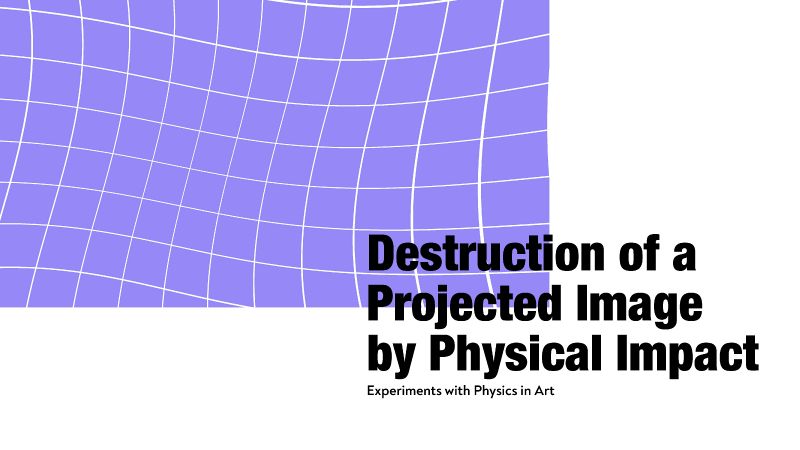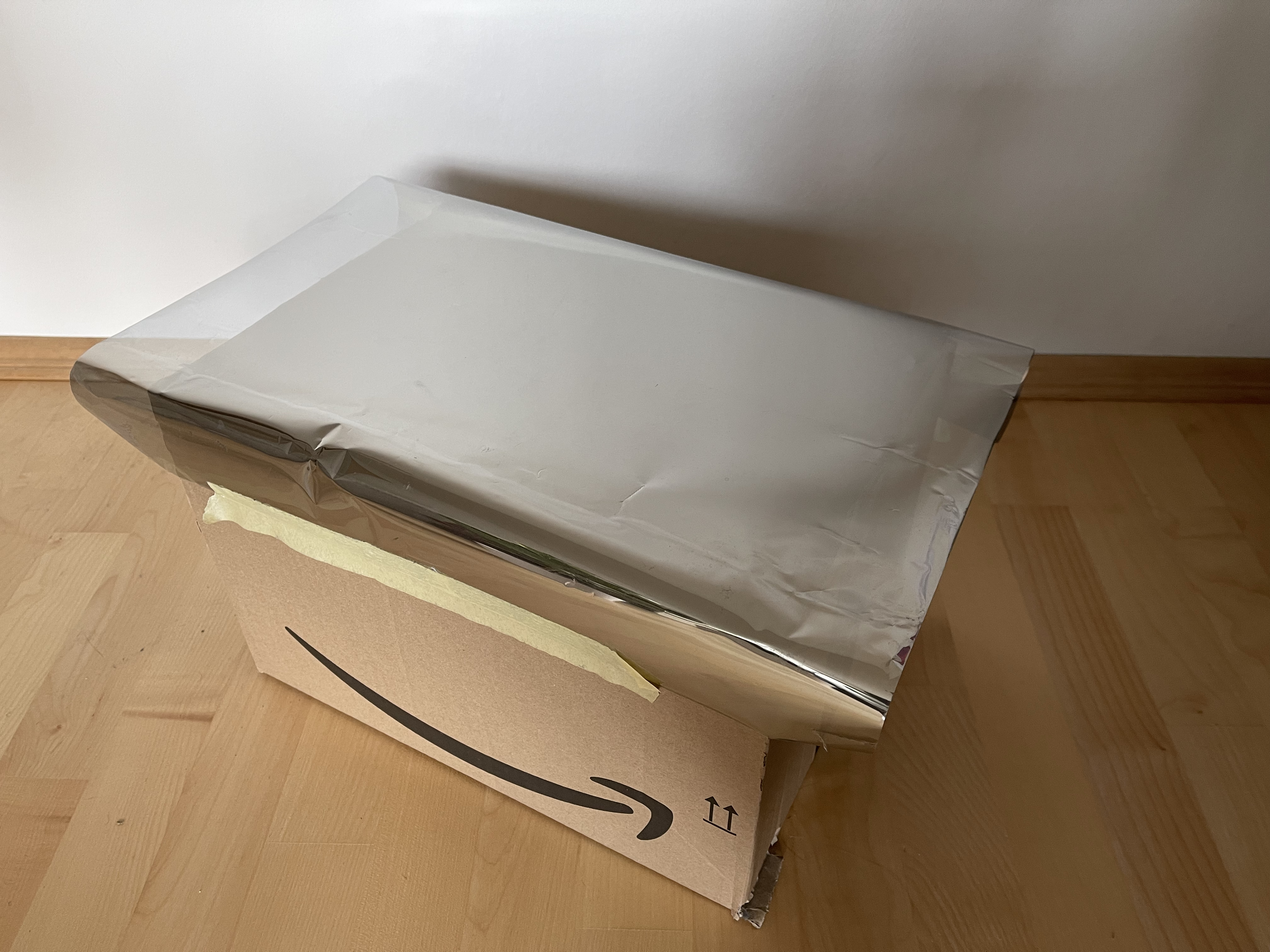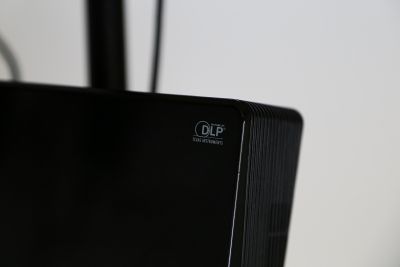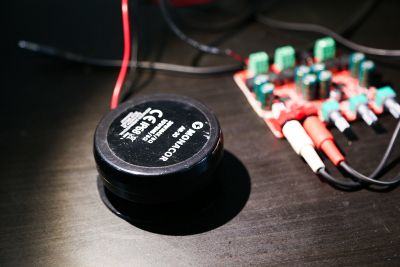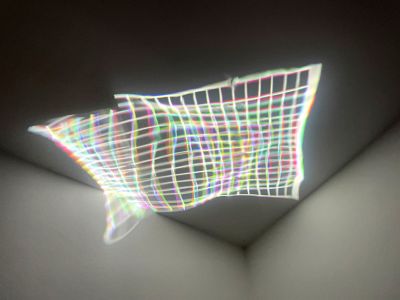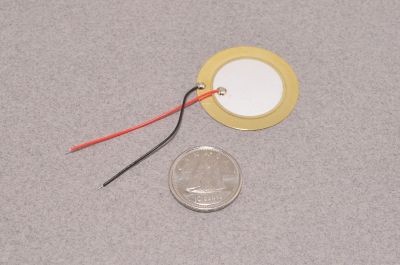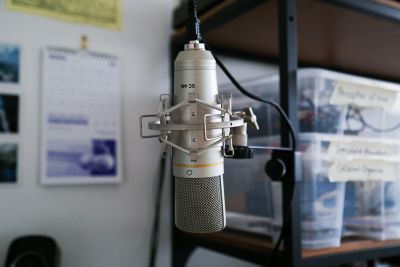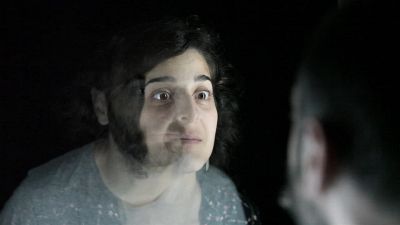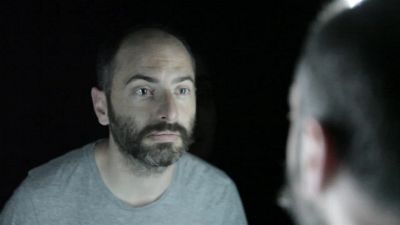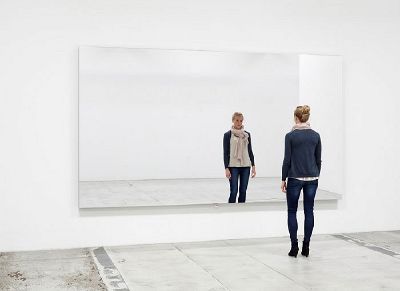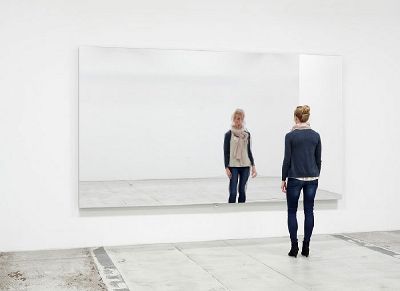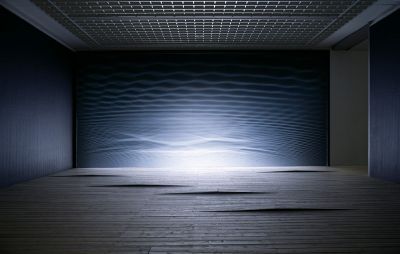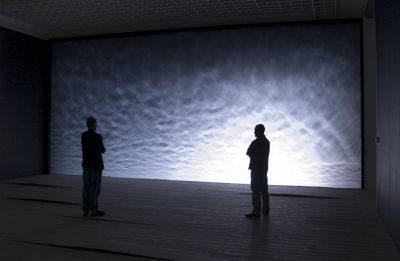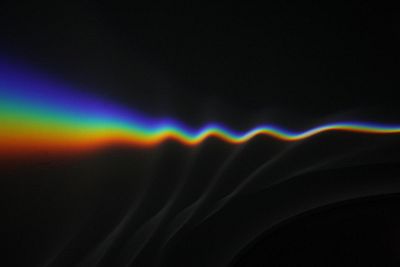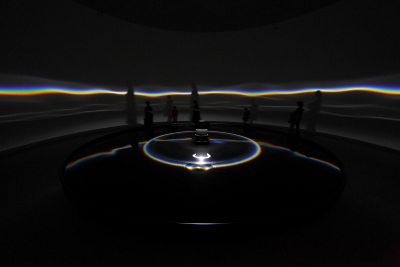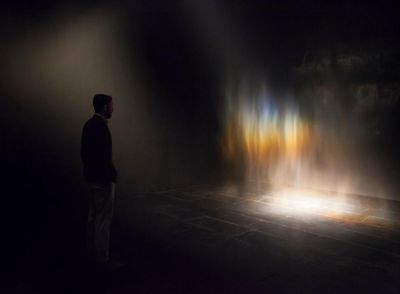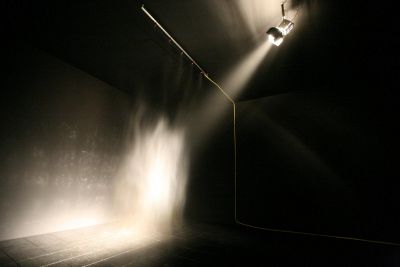(Created page with "===E.A.T.: Experiments in Art and Technology=== File:EAT.pdf") |
No edit summary |
||
| (6 intermediate revisions by the same user not shown) | |||
| Line 1: | Line 1: | ||
[[File:Shared Habitat Doku_Page_01.jpg|800px]] | |||
==Original Idea== | |||
At first this project should have been about “Perception of Time”. We live in an age where time appears to have become more precious, yet everything has to be at a faster pace. This is not just for the last few years, but since the beginning of the industrialisation. In big cities, but also in the digital world you see most of the people rushing. On the internet, for instance, videos become shorter, because people often don’t want to take the time to watch much longer content anymore. | |||
==New Idea== | |||
In the later experiments this concept broke down to abstract experiments with physics, which turned out to be more captivating than the preliminary idea. A clear image/sequence is projected on the wall that is moving slowly or even static. The more crowded a room becomes the more turbulent the video will turn and eventually end up in an abstract waveform that is separated in the colour spectrum of the projector. It can be seen as a physical destruction of the light or the digital image. At the same time, the speaker that brings the mirror to vibrate becomes louder and more tense and eventually ends up in a wild and tempestuous soundscape. | |||
==Initial Experiment== | |||
In my first experiment I stumbled upon an effect that was created by a mirror film reflecting a white logo projected on it. Then the image was distorted, almost shattered by a speaker that was vibrating the mirror film. | |||
[[:File:EwP_Experiment1.mp4]] | |||
==Material Studies== | |||
To make the image clearer, for the next experiments static mirrors were used. These were vibrated by an audio exciter, which is a speaker that is resonating a solid material to create sound, that is attached to the backside mirror. To get the best out of it, different materials were tested with different speakers and different projectors. | |||
<gallery> | |||
File:EwP_Mirror.jpg | |||
File:EwP_Mirror2.jpg | |||
</gallery> | |||
===Solid Glass Mirror=== | |||
Clear image, but did not vibrate strong enough. | |||
<gallery> | |||
File:EwP_1mmMirror.jpg | |||
File:EwP_1mmMirrorclose.jpg | |||
</gallery> | |||
===1mm PVC Mirror=== | |||
Blurry image and did not vibrate strong enough. | |||
<gallery> | |||
File:EwP_MirrorfilmOnPVC.jpg | |||
File:EwP_MirrorfilOnPVCclose.jpg | |||
</gallery> | |||
===See-through Mirror Film on 1mm PVC=== | |||
Clear image, but did not vibrate strong enough. | |||
[[File:Mirrorfilm.jpg]] | |||
===See-through Mirror Film=== | |||
Clear image | |||
Vibrates perfectly | |||
Best result so far | |||
Needs to be handled with care | |||
Image can be seen later in “Experiments” | |||
[[File:EwP_DLP.jpg|400px]] | |||
===DLP Projector=== | |||
Unless a LED or LCD projector, a DLP projector uses a color wheel that spins in a RGBW pattern, so fast, that the human eye thinks it’s seeing a distinct image. This technology allows to break up the colours of the projected light. | |||
[[File:EwP_ExciterSpeaker.jpg|400px]] | |||
===Exciter Speaker / Bodyshaker=== | |||
An exiter is a speaker that needs to be | |||
used on solid surfaces to resonate them. | |||
Cannot be used with mirror film, so it is | |||
not being used in this project | |||
==Further Experiments== | |||
These were experiments with an LCD | |||
Projector and mirror and mirror film, that | |||
were vibrated by an exciter speaker. | |||
Further experiments included different | |||
projectors, different materials for the | |||
mirror, different speakers and the decision | |||
what to project and distort. | |||
<gallery> | |||
File:EwP_Exp1projector.jpg | |||
File:EwP_Exp1Projector2.jpg | |||
File:EwP_Exp1Projector3.jpg | |||
File:EwP_Exp1Projector4.jpg | |||
</gallery> | |||
[[File:EwP_Exp.jpg|400px]] | |||
Result with DLP Projector and Mirror | |||
{{#ev:vimeo|709927445|Experiment Result}} | |||
==Aesthetics== | |||
Not only the projection, but the contraption will be a sculpture on it’s own. In the next step I will try to convert the speaker in the box to just a flat surface of mirror film, that is hanging in the room. I will try to build a speaker and use the foil as a membrane, so that it vibrates itself. The projected image will be a totally abstract, the distortion of the grid in this case looks very organic and the lines blur into one another the stronger the trigger becomes. | |||
<gallery> | |||
File:EwP_Render1.jpg | |||
File:EwP_Render2.jpg | |||
</gallery> | |||
==Trigger== | |||
To trigger the installation, three ways are compared and then the best and easiest will be used. | |||
===WiFi Device Detector=== | |||
The first one is a WiFi-Device-Counter, that can detect how many devices like smartphones are located in a room. This way of counting people could back the idea of people diving deeply into the digital world where everything is overly fast paced. I tried it, it worked fairly well, but I soon understood that it would either be misunderstood or not recognised at all without additional explanation. | |||
[[File:EwP_WiFiSniffer.jpg|400px]] | |||
===Second floor with transducers=== | |||
In the second approach to trigger the installation, transducers installed underneath a second floor would be an option. These could be used for example to capture the vibration, that can easily be converted into a vibration on the speaker again. For capturing, multiple cheap piezos could be used as contact microphones. This option might be too bulky and is more difficult to install. | |||
[[File:piezo3.jpg|400px]] | |||
===Noise in the room=== | |||
The easiest to install and perhaps the most obvious way is to install microphones all over the room and measuring the amplitude of those. With these data the amplitude of a low frequency sine wave can be controlled and eventually regulates the strength of the vibration of the mirror. | |||
[[File:EwP_Microphone.jpg|400px]] | |||
===Microphone amplitude – Processing Code=== | |||
This code is generating the projected image, capturing the amplitude | |||
of the microphone and playing the sound to the speaker. | |||
<source style="border:none; height:650px; overflow:scroll;" lang="c" line start="55" highlight="4"> | |||
import processing.sound.*; | |||
AudioIn input; | |||
Amplitude analyzer; | |||
SinOsc sine; | |||
int gridScale = 45; | |||
int columns, rows; | |||
void setup() { | |||
//VISUALS: | |||
//Start grid in fullscreen on second screen with black background | |||
fullScreen(2); | |||
background(0); | |||
//Initialize columns and rows | |||
columns = width/gridScale; | |||
rows = height/gridScale/2; | |||
//AUDIO: | |||
//Start listening to the microphone | |||
//Create an audio input and grab the 1st audio channel | |||
input = new AudioIn(this, 0); | |||
//Start the audio input | |||
input.start(); | |||
//Create a new amplitude analyzer | |||
analyzer = new Amplitude(this); | |||
//Patch the input to an volume analyzer | |||
analyzer.input(input); | |||
//Create sinewave | |||
sine = new SinOsc(this); | |||
} | |||
void draw() { | |||
//VISUALS: | |||
//Begin for-loop for columns | |||
for (int i = 0; i < columns; i++) { | |||
//Begin for-loop for rows | |||
for (int j = 0; j < rows; j++) { | |||
// Scaling up to draw a rectangle (x,y) | |||
int x = i*gridScale; | |||
int y = j*gridScale; | |||
//Fill the rectangle with black and give it a white stroke | |||
fill(0); | |||
stroke(255); | |||
strokeWeight(3); | |||
//For every column and row, a rectangle is drawn at an x and y location | |||
rect(x, y, gridScale, gridScale); | |||
} | |||
} | |||
//AUDIO: | |||
//Get the overall volume (between 0 and 1.0) | |||
float vol = analyzer.analyze(); | |||
//Map volume to sinewave volume | |||
float vol1 = map(vol, 0, 0.5, 0, 1); | |||
//Play sinewave with frequency of 60Hz and the volume mapped to the amplitude of the microphone | |||
sine.amp(vol1); | |||
sine.play(); | |||
sine.freq(60); | |||
delay(100); | |||
} | |||
</source> | |||
==Next Steps== | |||
*Build the contraption and test it in a few iterations | |||
*Try all the solutions for the trigger and build the final one | |||
*Think about the projected imagery? Maybe generate something, but it should stay very abstract. | |||
*Find a better surface than a wall to project it on. A slightly frosted glass shield could create the illusion of a holograph. | |||
*Test it in a larger scale (maybe with audience) | |||
*Get a better understanding of the science behind it to make minor improvements | |||
==References== | |||
==Mirror Illusions== | |||
===ALTER EGO: Moritz Wehrmann=== | |||
[[File:Alter Ego (Moritz Wehrmann) 720p.jpg|400px]][[File:Alter Ego (Moritz Wehrmann) 720p2.jpg|400px]] | |||
“ALTER EGO is an experimental setting, questioning and aiming to visualize the mental and mimetic interrelationship between two dialogue partners. It is a participatory work that uses stroboscopic light and a special glas[...]” | |||
===Mirror Wall: Jeppe Hein=== | |||
[[File:mirrorwall03.jpg|400px]][[File:mirrorwall04-2.jpg|400px]] | |||
A large mirror film mounted to a wall begins to vibrate in the motion of waves. The mirror reflects a different distorted image of yourself and the room you are in. It creates a feeling of dizziness. | |||
==Reflection and distortion of colour== | |||
===Notion Motion: Olafur Eliasson=== | |||
[[File:xfvQ2Ap0qC4vuS58g0nuFALFnStJk95I9n5CNW7E.jpeg|400px]][[File:xgbDfUYKEjsQN9QyDoGLV8ntq5Xw3HIBbAzAPp6y.jpeg|400px]] | |||
He was inspired by vibration and wave patterns created by the viewers. Light is reflected from water to a wall. In the floor there are pedals that create waves in the water/the reflection. | |||
===Your Watercolour Horizon: Olafur Eliasson=== | |||
[[File:WCH_OE2.jpeg|400px]] | |||
[[File:WCH_OE.jpeg|400px]] | |||
A spotlight is pointing on a prism that seperates the colours of the spectrum, which are reflected from a circular pool of water onto the wall. Pedals on the floor are connected to the pool. | |||
===Beauty: Olafur Eliasson=== | |||
[[File:BEA_OE.jpeg|400px]] | |||
[[File:BEA_OE2.jpeg|400px]] | |||
A spotlight is shining on artificial mist. Depending on the perspective the viewer can observe | |||
the light spectrum reflected by the tiny water droplets. | |||
==Projection and Perspective== | |||
{{#ev:vimeo|74308529|The Vanishing Point}} | |||
===The Vanishing Point: United Visual Artists=== | |||
In The Vanishing Point UVA uses perspective as a tool to reshape and redefine a space to create an illusion of light as a physical material. | |||
==Image Sources== | |||
https://moritzwehrmann.com/portfolio/alter-ego-version-ii/ | |||
https://www.jeppehein.net/project_id.php?path=works&id=98 | |||
https://www.boijmans.nl/en/exhibitions/olafur-eliasson-notion-motion-2016 | |||
https://olafureliasson.net | |||
https://www.uva.co.uk/features/vanishing-point-2019 | |||
https://bc-robotics.com/shop/piezo-element-4-2khz/ | |||
===E.A.T.: Experiments in Art and Technology=== | ===E.A.T.: Experiments in Art and Technology=== | ||
[[:File:EAT.pdf]] | [[:File:EAT.pdf]] | ||
=PART 2= | |||
==AIM== | |||
The aim is to reduce the installation to just the mirror film and the projection. | |||
==EXPERIMENTS== | |||
{{#ev:vimeo|754494138|Experiments 1}} | |||
{{#ev:vimeo|754493686|Experiments 2}} | |||
=SelfPleasure (revised)= | |||
{{#ev:vimeo|754469185|SelfPleasure (revised)}} | |||
Latest revision as of 23:11, 27 September 2022
Original Idea
At first this project should have been about “Perception of Time”. We live in an age where time appears to have become more precious, yet everything has to be at a faster pace. This is not just for the last few years, but since the beginning of the industrialisation. In big cities, but also in the digital world you see most of the people rushing. On the internet, for instance, videos become shorter, because people often don’t want to take the time to watch much longer content anymore.
New Idea
In the later experiments this concept broke down to abstract experiments with physics, which turned out to be more captivating than the preliminary idea. A clear image/sequence is projected on the wall that is moving slowly or even static. The more crowded a room becomes the more turbulent the video will turn and eventually end up in an abstract waveform that is separated in the colour spectrum of the projector. It can be seen as a physical destruction of the light or the digital image. At the same time, the speaker that brings the mirror to vibrate becomes louder and more tense and eventually ends up in a wild and tempestuous soundscape.
Initial Experiment
In my first experiment I stumbled upon an effect that was created by a mirror film reflecting a white logo projected on it. Then the image was distorted, almost shattered by a speaker that was vibrating the mirror film.
Material Studies
To make the image clearer, for the next experiments static mirrors were used. These were vibrated by an audio exciter, which is a speaker that is resonating a solid material to create sound, that is attached to the backside mirror. To get the best out of it, different materials were tested with different speakers and different projectors.
Solid Glass Mirror
Clear image, but did not vibrate strong enough.
1mm PVC Mirror
Blurry image and did not vibrate strong enough.
See-through Mirror Film on 1mm PVC
Clear image, but did not vibrate strong enough.
See-through Mirror Film
Clear image Vibrates perfectly Best result so far Needs to be handled with care Image can be seen later in “Experiments”
DLP Projector
Unless a LED or LCD projector, a DLP projector uses a color wheel that spins in a RGBW pattern, so fast, that the human eye thinks it’s seeing a distinct image. This technology allows to break up the colours of the projected light.
Exciter Speaker / Bodyshaker
An exiter is a speaker that needs to be used on solid surfaces to resonate them. Cannot be used with mirror film, so it is not being used in this project
Further Experiments
These were experiments with an LCD Projector and mirror and mirror film, that were vibrated by an exciter speaker. Further experiments included different projectors, different materials for the mirror, different speakers and the decision what to project and distort.
Result with DLP Projector and Mirror
Aesthetics
Not only the projection, but the contraption will be a sculpture on it’s own. In the next step I will try to convert the speaker in the box to just a flat surface of mirror film, that is hanging in the room. I will try to build a speaker and use the foil as a membrane, so that it vibrates itself. The projected image will be a totally abstract, the distortion of the grid in this case looks very organic and the lines blur into one another the stronger the trigger becomes.
Trigger
To trigger the installation, three ways are compared and then the best and easiest will be used.
WiFi Device Detector
The first one is a WiFi-Device-Counter, that can detect how many devices like smartphones are located in a room. This way of counting people could back the idea of people diving deeply into the digital world where everything is overly fast paced. I tried it, it worked fairly well, but I soon understood that it would either be misunderstood or not recognised at all without additional explanation.
Second floor with transducers
In the second approach to trigger the installation, transducers installed underneath a second floor would be an option. These could be used for example to capture the vibration, that can easily be converted into a vibration on the speaker again. For capturing, multiple cheap piezos could be used as contact microphones. This option might be too bulky and is more difficult to install.
Noise in the room
The easiest to install and perhaps the most obvious way is to install microphones all over the room and measuring the amplitude of those. With these data the amplitude of a low frequency sine wave can be controlled and eventually regulates the strength of the vibration of the mirror.
Microphone amplitude – Processing Code
This code is generating the projected image, capturing the amplitude of the microphone and playing the sound to the speaker.
import processing.sound.*;
AudioIn input;
Amplitude analyzer;
SinOsc sine;
int gridScale = 45;
int columns, rows;
void setup() {
//VISUALS:
//Start grid in fullscreen on second screen with black background
fullScreen(2);
background(0);
//Initialize columns and rows
columns = width/gridScale;
rows = height/gridScale/2;
//AUDIO:
//Start listening to the microphone
//Create an audio input and grab the 1st audio channel
input = new AudioIn(this, 0);
//Start the audio input
input.start();
//Create a new amplitude analyzer
analyzer = new Amplitude(this);
//Patch the input to an volume analyzer
analyzer.input(input);
//Create sinewave
sine = new SinOsc(this);
}
void draw() {
//VISUALS:
//Begin for-loop for columns
for (int i = 0; i < columns; i++) {
//Begin for-loop for rows
for (int j = 0; j < rows; j++) {
// Scaling up to draw a rectangle (x,y)
int x = i*gridScale;
int y = j*gridScale;
//Fill the rectangle with black and give it a white stroke
fill(0);
stroke(255);
strokeWeight(3);
//For every column and row, a rectangle is drawn at an x and y location
rect(x, y, gridScale, gridScale);
}
}
//AUDIO:
//Get the overall volume (between 0 and 1.0)
float vol = analyzer.analyze();
//Map volume to sinewave volume
float vol1 = map(vol, 0, 0.5, 0, 1);
//Play sinewave with frequency of 60Hz and the volume mapped to the amplitude of the microphone
sine.amp(vol1);
sine.play();
sine.freq(60);
delay(100);
}
Next Steps
- Build the contraption and test it in a few iterations
- Try all the solutions for the trigger and build the final one
- Think about the projected imagery? Maybe generate something, but it should stay very abstract.
- Find a better surface than a wall to project it on. A slightly frosted glass shield could create the illusion of a holograph.
- Test it in a larger scale (maybe with audience)
- Get a better understanding of the science behind it to make minor improvements
References
Mirror Illusions
ALTER EGO: Moritz Wehrmann
“ALTER EGO is an experimental setting, questioning and aiming to visualize the mental and mimetic interrelationship between two dialogue partners. It is a participatory work that uses stroboscopic light and a special glas[...]”
Mirror Wall: Jeppe Hein
A large mirror film mounted to a wall begins to vibrate in the motion of waves. The mirror reflects a different distorted image of yourself and the room you are in. It creates a feeling of dizziness.
Reflection and distortion of colour
Notion Motion: Olafur Eliasson
He was inspired by vibration and wave patterns created by the viewers. Light is reflected from water to a wall. In the floor there are pedals that create waves in the water/the reflection.
Your Watercolour Horizon: Olafur Eliasson
A spotlight is pointing on a prism that seperates the colours of the spectrum, which are reflected from a circular pool of water onto the wall. Pedals on the floor are connected to the pool.
Beauty: Olafur Eliasson
A spotlight is shining on artificial mist. Depending on the perspective the viewer can observe the light spectrum reflected by the tiny water droplets.
Projection and Perspective
The Vanishing Point: United Visual Artists
In The Vanishing Point UVA uses perspective as a tool to reshape and redefine a space to create an illusion of light as a physical material.
Image Sources
https://moritzwehrmann.com/portfolio/alter-ego-version-ii/ https://www.jeppehein.net/project_id.php?path=works&id=98 https://www.boijmans.nl/en/exhibitions/olafur-eliasson-notion-motion-2016 https://olafureliasson.net https://www.uva.co.uk/features/vanishing-point-2019 https://bc-robotics.com/shop/piezo-element-4-2khz/
E.A.T.: Experiments in Art and Technology
PART 2
AIM
The aim is to reduce the installation to just the mirror film and the projection.
EXPERIMENTS
